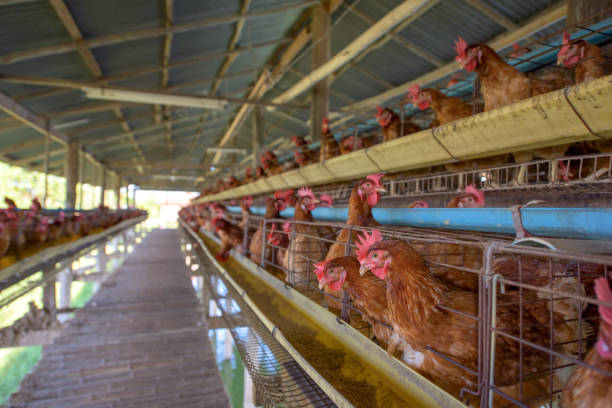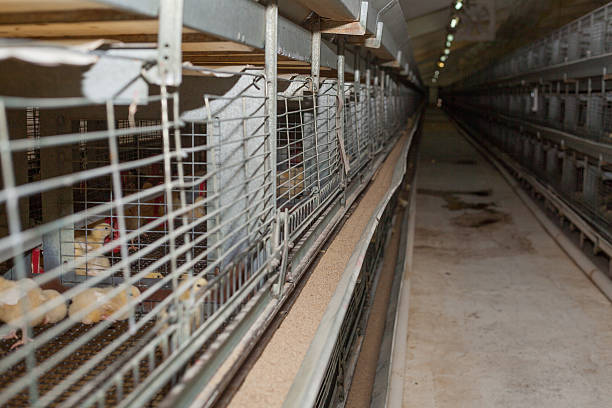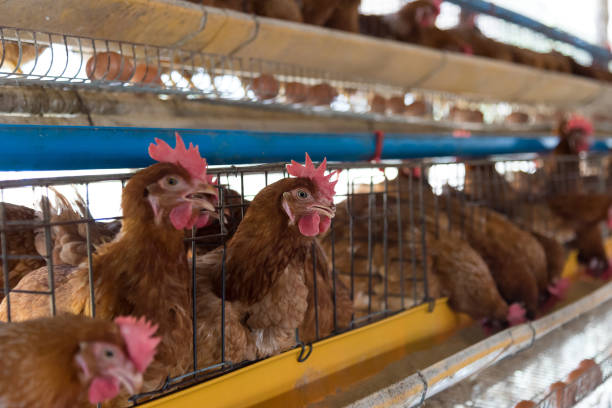Choosing the Right Chicken Cage Equipment: A Guide for African Poultry Farmers
Choosing the Right Chicken Cage Equipment: A Guide for African Poultry Farmers
Poultry farming in Africa is experiencing rapid growth, driven by increasing demand for chicken meat and eggs. To meet this demand efficiently and profitably, African poultry farmers are increasingly turning to modern farming practices, with chicken cage systems playing a key role. However, selecting the right chicken cage equipment is crucial for success. This guide will provide African poultry farmers with the information they need to make informed decisions about choosing the right chicken cage equipment for their specific needs.
Understanding the Basics: Why Use Chicken Cages?
Before diving into the specifics of choosing cage equipment, it’s important to understand the advantages of using chicken cages over traditional free-range methods. Cages offer several benefits, and some potential drawbacks that need to be considered:
Increased Productivity: Cages allow for higher stocking densities, meaning you can raise more chickens in a given space. This, in turn, leads to greater egg or meat production.
Improved Hygiene: Cages isolate chickens from their droppings, reducing the risk of disease transmission and improving overall hygiene. This also lowers the need for constant cleaning of the whole poultry house.
Easier Management: Cages simplify feeding, watering, and egg collection. It is much easier to manage and monitor the chicken when they are kept in cages.
Reduced Feed Waste: Cages minimize feed wastage as chickens have limited access to spill feed.
Predator Protection: Cages provide a safe and secure environment for chickens, protecting them from predators.
Better Monitoring: Farmers can easily monitor individual birds for health issues.
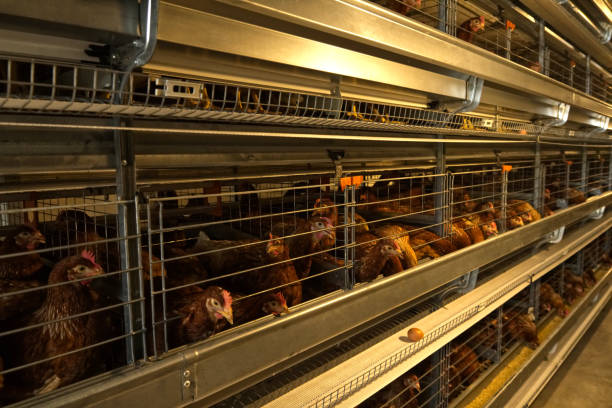
Types of Chicken Cages Available
The market offers a variety of chicken cage systems, each designed for specific purposes and farming scales. Here’s an overview of the most common types:
Layer Cages: Designed specifically for egg-laying hens. Layer cages are typically multi-tiered, maximizing space utilization. They often include features like automated feeding, watering, and egg collection systems.
A-Frame Layer Cages: These are a classic design, with cages arranged in an A-shape. They are relatively inexpensive and easy to install, but may require more manual labor for egg collection.
H-Frame Layer Cages: These cages are arranged in an H-shape, offering better ventilation and easier access for feeding and egg collection. They are often more expensive than A-frame cages but offer improved efficiency.
Broiler Cages: Designed for raising chickens for meat. Broiler cages are typically larger than layer cages to accommodate the rapid growth of broilers.
Flat Deck Broiler Cages: These cages consist of single-tiered structures, which are easy to manage. They can suit the broiler farming scale from small to large.
Tiered Broiler Cages: They’re more space-efficient but may require more careful management of ventilation and waste removal.
Chick Cages or Baby Chicken Cages: Used for raising chicks from day-old to pullet stage before they are moved to layer or broiler cages. The equipment is designed for ease of use and to minimize injury to baby chicks as well as keep them warm.
Manure Collection Systems: Waste management is a huge problem in the poultry house. The manure can be dried and sold as useful fertilizers. Hence, the value-added benefit of chicken farming. Manure systems include:
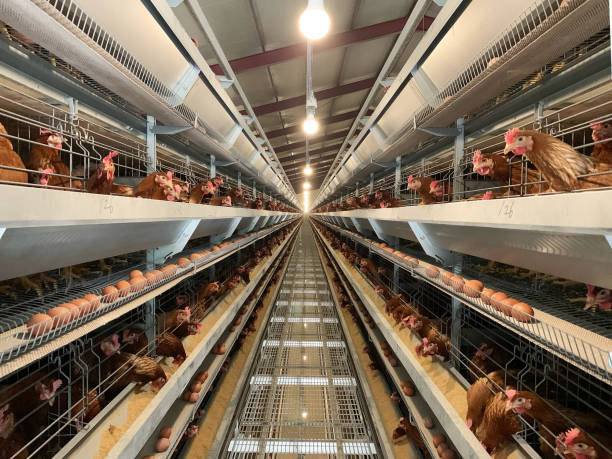
Scraper System: This system works mechanically. A scraper moves across the floor of the poultry house and collects the manure. Then, the farmer can collect the manure from the scapped area for fertilization use.
Belt System: A belt moves slowly behind the cages to collect droppings. The belt is usually made of plastic or rubber.
Key Factors to Consider When Choosing Chicken Cage Equipment
Choosing the right chicken cage equipment is a critical decision that will impact the efficiency, profitability, and sustainability of your poultry farm. Here are the key factors to consider:
Type of Chicken: Are you raising layers for egg production or broilers for meat? The type of chicken you raise will determine the specific requirements of the cage system. Layer cages are designed to optimize egg production, while broiler cages prioritize rapid growth and meat yield.
Farm Size and Capacity: How many chickens do you plan to raise? The size of your farm and the number of chickens you intend to house will determine the capacity of the cage system you need. Consider your current needs and future expansion plans.
Budget: How much are you willing to invest in cage equipment? Chicken cage systems vary widely in price, depending on the type, size, and features. Establish a budget and look for equipment that offers the best value for your money. Do not just look at the superficial price and compare the products. Many of the prices are different because of the change of quality of the chicken cage equipment.
Climate and Environmental Conditions: Poultry farmers in Africa should consider the climate of the region when choosing chicken cages. The cage you choose needs to be suitable to the climate as it has a direct impact on the success of the farms’ productivity.
Ventilation: Good ventilation is essential to remove moisture, ammonia, and other harmful gases from the poultry house. Choose cages that promote airflow and consider installing ventilation systems to regulate temperature and humidity.
Temperature Control: High temperatures can negatively impact chicken health and productivity. Consider cages with shade structures or cooling systems to help regulate temperature, especially in hot climates.
Materials and Durability: The materials used in the construction of the cages will affect their durability and lifespan. Look for cages made from high-quality, corrosion-resistant materials such as galvanized steel or stainless steel. These materials will withstand the harsh conditions of a poultry house and provide years of reliable service.
Ease of Installation and Maintenance: Choose cages that are easy to install and maintain. Look for designs that are simple to assemble and disassemble for cleaning and repairs. Consider the availability of spare parts and technical support in your region.
Automation: Automated feeding, watering, and egg collection systems can significantly reduce labor costs and improve efficiency. However, automated systems are more expensive and may require specialized maintenance. Evaluate the cost-benefit of automation based on your farm size and labor availability.
Hygiene and Sanitation: Effective waste management is critical for maintaining a healthy environment and preventing disease outbreaks. Choose cages with efficient manure removal systems and designs that minimize the accumulation of dirt and debris. Regular cleaning and disinfection are essential for maintaining hygiene.
Animal Welfare: While cages offer many benefits, it’s important to consider the welfare of the chickens. Choose cages that provide adequate space for chickens to move around, stand, and stretch their wings. Ensure that the cages are well-ventilated, well-lit, and free from sharp edges or other hazards.
Supplier Reputation and Support: Choose a reputable supplier with a proven track record of providing high-quality chicken cage equipment and excellent customer support. Look for suppliers who offer warranties, training, and technical assistance. Read reviews and talk to other farmers who have used their products.
Practical Tips for African Poultry Farmers
Start Small and Scale Up: If you are new to poultry farming, start with a small-scale operation and gradually scale up as you gain experience and knowledge.
Invest in Quality Equipment: While it may be tempting to save money by purchasing cheaper equipment, investing in high-quality cages will pay off in the long run through increased productivity, reduced maintenance costs, and improved animal welfare.
Seek Expert Advice: Consult with experienced poultry farmers, agricultural extension officers, or poultry specialists to get advice on choosing the right cage equipment for your specific needs and conditions.
Visit Other Farms: Visit other poultry farms in your area to see different types of cage systems in operation and learn from their experiences.
Consider Local Manufacturing: Explore the possibility of purchasing locally manufactured chicken cage equipment. This can reduce transportation costs and support local businesses.
Prioritize Training: Invest in training for yourself and your staff on the proper use and maintenance of the cage equipment. This will ensure that the equipment is used efficiently and effectively.
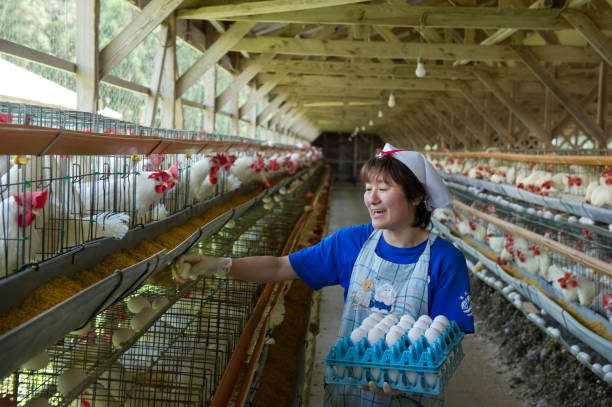
Monitor and Evaluate: Regularly monitor and evaluate the performance of your cage system to identify areas for improvement. Track key metrics such as egg production, feed conversion rate, and mortality rate.
Common Mistakes to Avoid
Choosing the Wrong Type of Cage: Selecting the wrong type of cage for your specific needs can lead to reduced productivity, increased costs, and animal welfare issues.
Ignoring Climate Conditions: Failing to consider the climate conditions in your area can result in poor ventilation, temperature control problems, and increased risk of disease outbreaks.
Neglecting Maintenance: Neglecting regular maintenance can lead to equipment failures, reduced lifespan, and increased repair costs.
Overlooking Animal Welfare: Overlooking animal welfare can result in stress, disease, and reduced productivity.
Failing to Plan for Expansion: Failing to plan for future expansion can limit your growth potential and make it difficult to adapt to changing market conditions.
Solely Relying On Price: Do not ever buy the chicken cage or poultry equipment just based on its price. You get what you pay for. The lowest prices can reflect the poorest quality chicken cage equipment.
Conclusion
Choosing the right chicken cage equipment is a crucial investment for African poultry farmers looking to improve efficiency, profitability, and sustainability. By considering the factors outlined in this guide, farmers can make informed decisions that will contribute to the success of their poultry operations. Remember to prioritize quality, durability, animal welfare, and supplier support when selecting your cage equipment. Ultimately, this will lead to a more productive and sustainable poultry farm, contributing to food security and economic growth in Africa.



